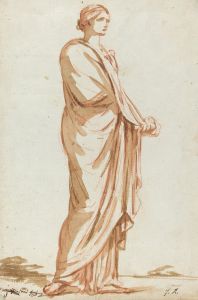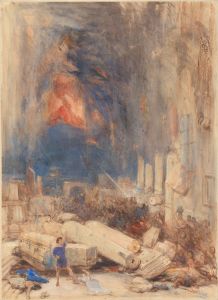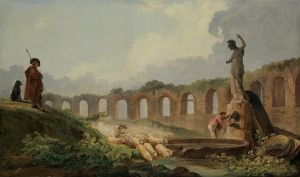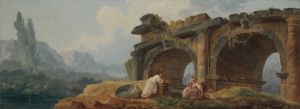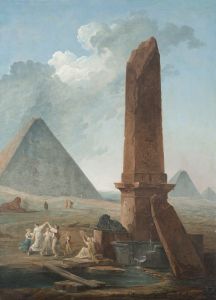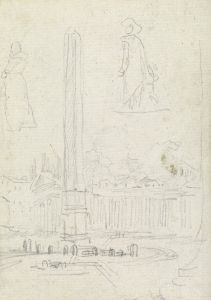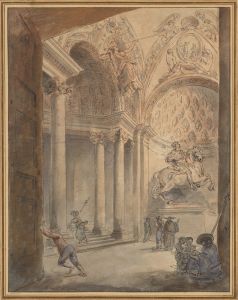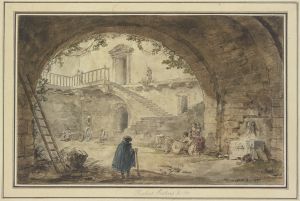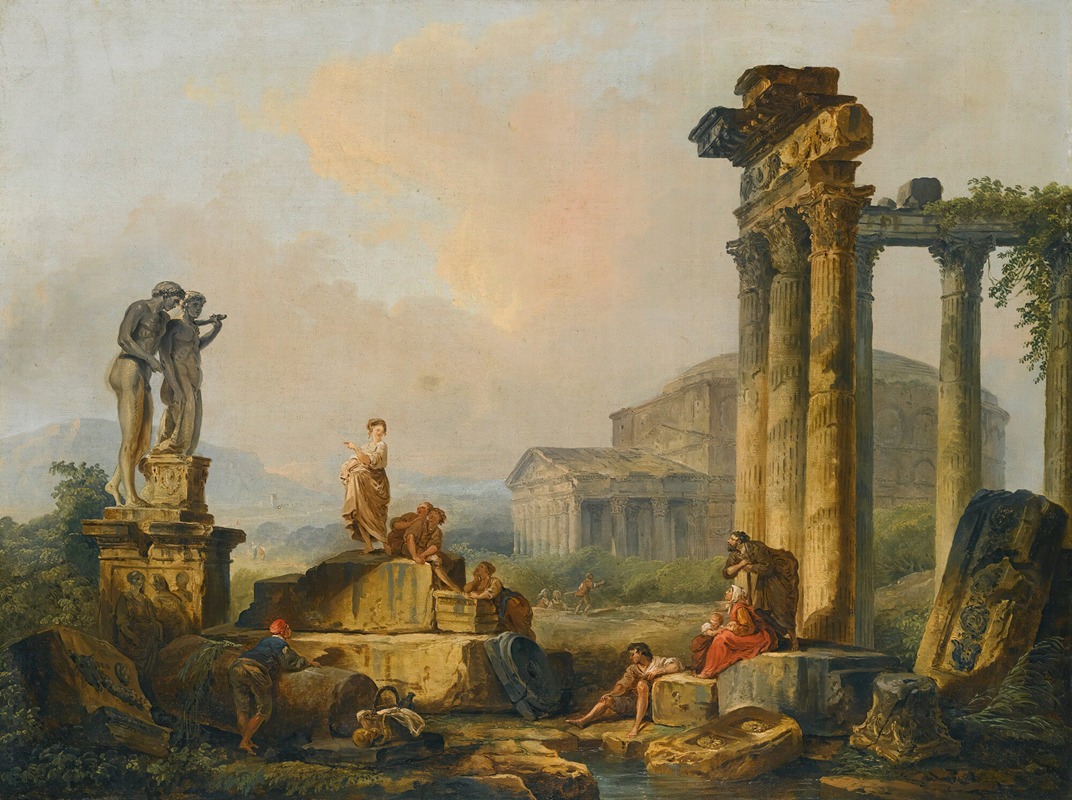
A Landscape With Shepherds And Shepherdesses Among Ancient Ruins, With The Statue Of Castor And Pollux And The Pantheon Beyond
A hand-painted replica of Hubert Robert’s masterpiece A Landscape With Shepherds And Shepherdesses Among Ancient Ruins, With The Statue Of Castor And Pollux And The Pantheon Beyond, meticulously crafted by professional artists to capture the true essence of the original. Each piece is created with museum-quality canvas and rare mineral pigments, carefully painted by experienced artists with delicate brushstrokes and rich, layered colors to perfectly recreate the texture of the original artwork. Unlike machine-printed reproductions, this hand-painted version brings the painting to life, infused with the artist’s emotions and skill in every stroke. Whether for personal collection or home decoration, it instantly elevates the artistic atmosphere of any space.
Hubert Robert's painting A Landscape with Shepherds and Shepherdesses Among Ancient Ruins, with the Statue of Castor and Pollux and the Pantheon Beyond is a notable example of the artist's work, which often combined elements of real and imagined architecture to evoke a sense of grandeur and nostalgia. Hubert Robert (1733–1808), a French painter, was renowned for his depictions of ruins and landscapes, earning him the nickname "Robert des Ruines." His works frequently blended historical accuracy with artistic imagination, creating evocative scenes that celebrated the beauty of decay and the passage of time.
This particular painting features a pastoral scene set amidst ancient ruins. The composition includes shepherds and shepherdesses tending to their flocks, a common motif in Robert's work that reflects the idyllic and romanticized view of rural life popular during the 18th century. The ruins depicted in the painting include the statue of Castor and Pollux, figures from Roman mythology who were considered protectors of sailors and associated with the constellation Gemini. In the background, the Pantheon, one of the most iconic structures of ancient Rome, is visible, adding a sense of historical depth and grandeur to the scene.
Robert's artistic style is characterized by his use of light and shadow to create atmospheric effects, as well as his attention to architectural detail. While the ruins in his paintings often draw inspiration from real locations, they are frequently reimagined or rearranged to suit the composition. This approach reflects the influence of the 18th-century tradition of capriccio, a genre of painting that combines architectural elements in imaginative ways.
The painting exemplifies the 18th-century fascination with antiquity and the ruins of classical civilizations, which were seen as symbols of both the grandeur of the past and the transience of human achievement. This interest was fueled by the rediscovery of ancient sites during the period and the popularity of the Grand Tour, a journey through Europe undertaken by wealthy young men to study art, culture, and history.
As with many of Robert's works, this painting captures a sense of timelessness, blending the pastoral with the monumental. It reflects the artist's ability to evoke both the beauty of nature and the majesty of human creation, while also suggesting the inevitable decline of even the greatest achievements.
No further specific historical details about this painting, such as its commission, provenance, or current location, are readily available.





